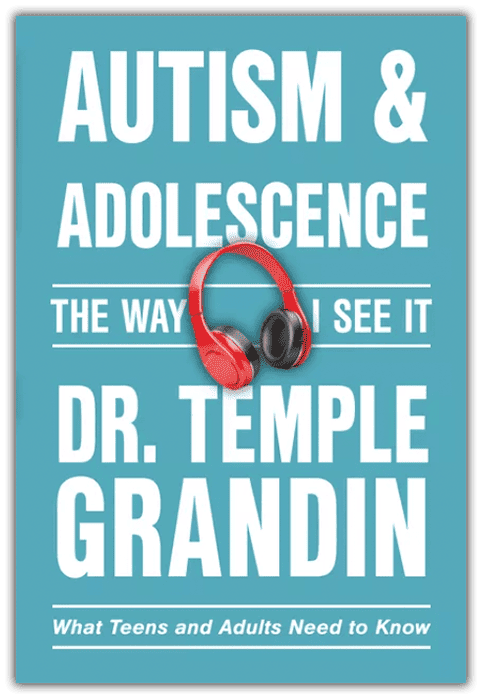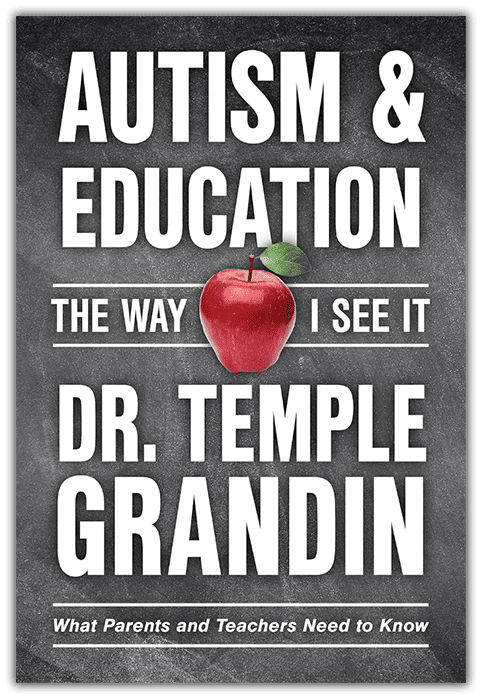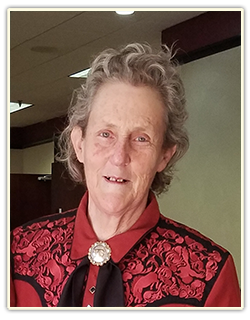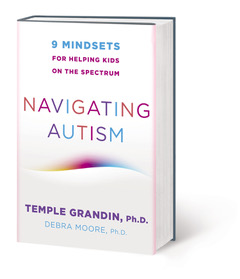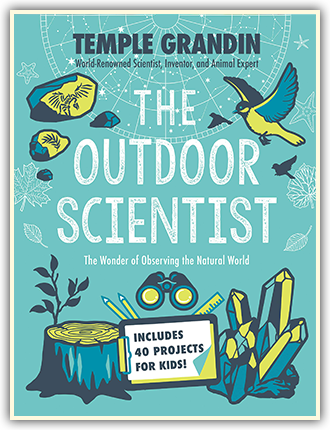
Webinars & Conferences
Upcoming Conferences
July 29 - Aurora, CO
August 14 - Hershey, PA
August 18 - Webinar
August 20 - New Orleans, LA
August 23 - Attica, MI
September 10 - Dallas Forth Worth
September 11 - Knoxville, TN
September 15 - Missoula, MT
September 19 - Cincinnati, OH
November 19 - Memphis, TN
November 20 - Jonesboro, AR
A MUST LISTEN!!
Temple's Latest Books!
Temple Grandin earns Dole Leadership Prize!
NAVIGATING AUTISM
"The Outdoor Scientist"
Kids Need to Learn to Figure Things Out
At autism meetings, both grandfathers and grandmothers often come up to me and tell me that they discovered that they were on the autism spectrum when the grandchildren were diagnosed. In most cases, the grandparents had good jobs in engineering, accounting or computer science. They were often married and had children. At a tech conference last year, a grandfather who was a computer programmer came up to me and said, “I was one of those granddads.” Why did the grandfather end up with a good career and the grandchild with autism is having many problems?
There are important things that parents and teachers can learn from good parenting practices of the 1950’s. When I was a child, we had lots of time to invent our own games and make things. When I made a mistake, I had to figure out how to correct it. By 1950’s standards, some of the things kids get upset about today would be trivial. I had a teacher on a recent virtual conference ask me a question I almost could not believe. When I held up a paper snowflake I had made, she asked, “What would happen to a child’s self-esteem if he/she cuts it wrong and it falls apart?” I said, “You get another piece of printer paper and try again.” If it fails again, then teach the child how to find the solution on YouTube. In the 1950’s, parents only intervened in kid’s play if they started doing something dangerous or really mean. TV watching was limited to one hour per day. When I was in elementary school, I spent hours with three friends putting up an old Army tent. We never got it put up right. We were over at the next door neighbor’s house and the adults just let us figure it out. One of the reasons why kids get so upset when they make a mistake is due to not doing enough things where they have to figure out the solution.
Other things that really helped me in my elementary school years was old-fashioned structured teaching of table manners and saying “please” and “thank you.” When I made a mistake, such as putting my finger in the mashed potatoes, mother gave the instruction on what I should do instead of screaming, “No!” She would say, “Use the fork.” At a single meal, there may be several of these teachable moments. When I was only seven or eight, I had already learned how to go in a store and buy things and how to save money. I got 50 cents a week for allowance and I knew exactly what I could buy with it. Fifty cents could buy five Superman comic books, ten candy bars, or a glider airplane and one comic book. If I wanted a 69 cent propeller plane, I had to save for two weeks.
Academic skills and life skills are two different things. I am seeing smart 12- to 16-year-olds who have never learned work or shopping skills. It starts with kids doing chores, then volunteer jobs and then real jobs. They need to learn how to do a task for somebody outside the family. Recently, I talked to providers and teachers who worked with both autistic children and adults. When I finished my virtual talk about how I was taught with good 1950’s parenting. Somebody wrote on the chat board that what I had to say about old-fashioned teaching methods was something totally new. Another person wrote that they thought using some of the structured 1950’s methods would be helpful. A good teacher knows just how much to stretch a child slightly out of their comfort zone to try something new. The methods used in the 1950’s were not punitive. Mealtime was highly structured to teach manners, but at other times, there was also lots of time to be creative and engage in free play.
About Temple Grandin
Dr. Grandin did not talk until she was three and a half years old. She was fortunate to get early speech therapy. Her teachers also taught her how to wait and take turns when playing board games. She was mainstreamed into a normal kindergarten at age five. Oliver Sacks wrote in the forward of Thinking in Pictures that her first book Emergence: Labeled Autistic was “unprecedented because there had never before been an inside narrative of autism.” Dr. Sacks profiled Dr. Grandin in his best selling book Anthropologist on Mars.
Dr. Grandin became a prominent author and speaker on both autism and animal behavior. Today she is a professor of Animal Science at Colorado State University. She also has a successful career consulting on both livestock handling equipment design and animal welfare. She has been featured on NPR (National Public Radio) and a BBC Special – "The Woman Who Thinks Like a Cow". She has also appeared on National TV shows such as Larry King Live, 20/20, Sixty Minutes, Fox and Friends, and she has a 2010 TED talk. Articles about Dr. Grandin have appeared in Time Magazine, New York Times, Discover Magazine, Forbes and USA Today. HBO made an Emmy Award winning movie about her life and she was inducted into the American Academy of Arts and Sciences in 2016.
When she was young, she was considered weird and teased and bullied in high school. The only place she had friends was activities where there was a shared interest such as horses, electronics, or model rockets. Mr. Carlock, her science teacher, was an important mentor who encouraged her interest in science. When she had a new goal of becoming a scientist, she had a reason for studying. Today half the cattle in the United States are handled in facilities she has designed.
